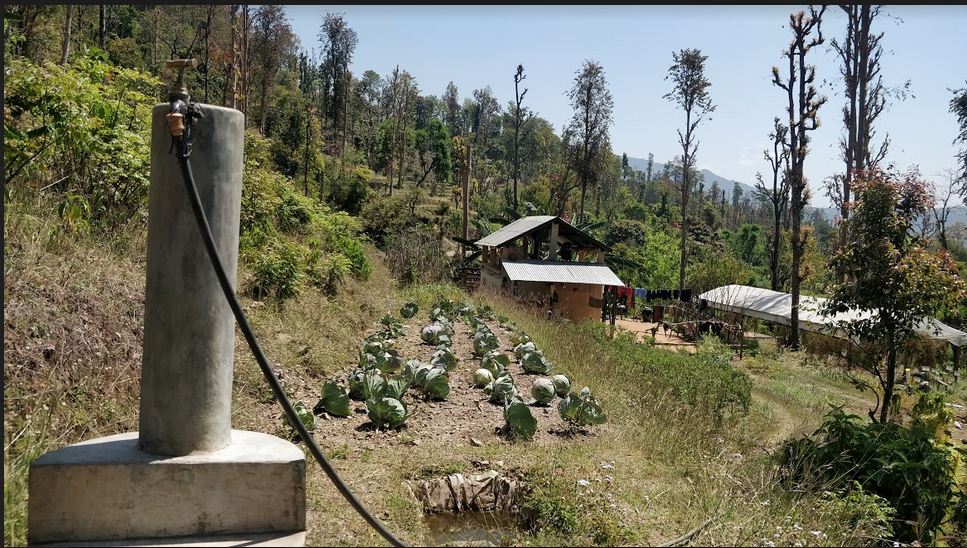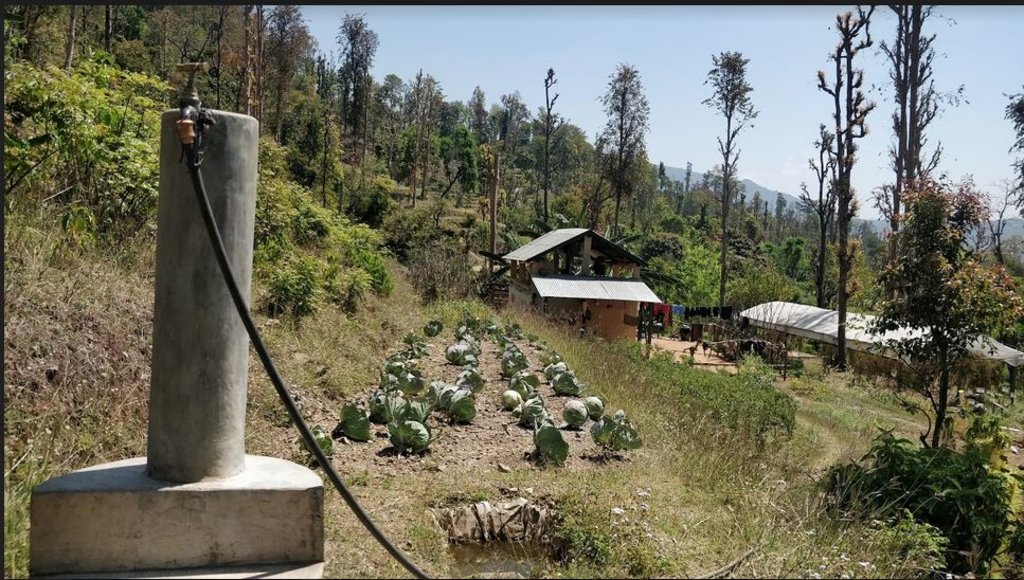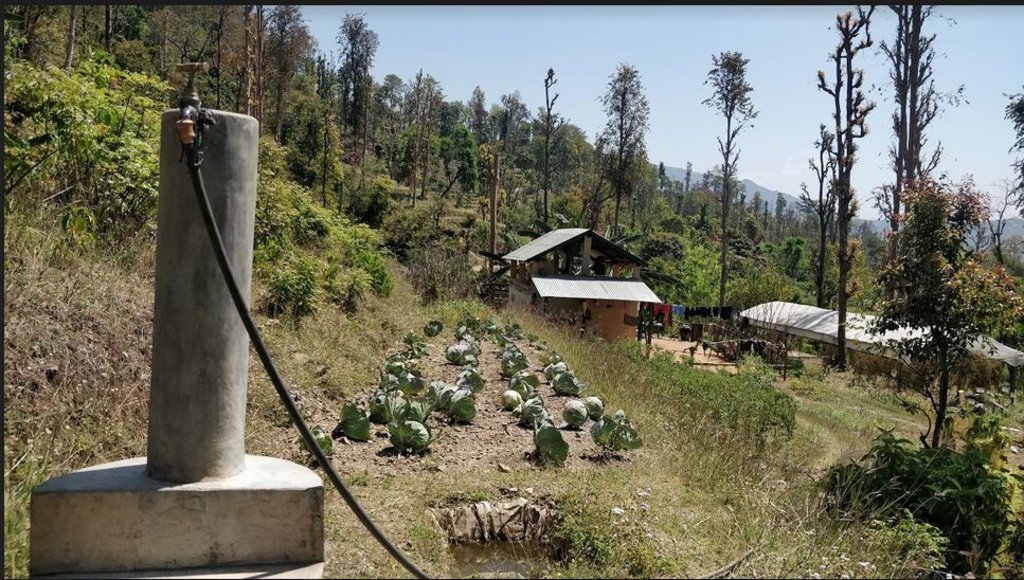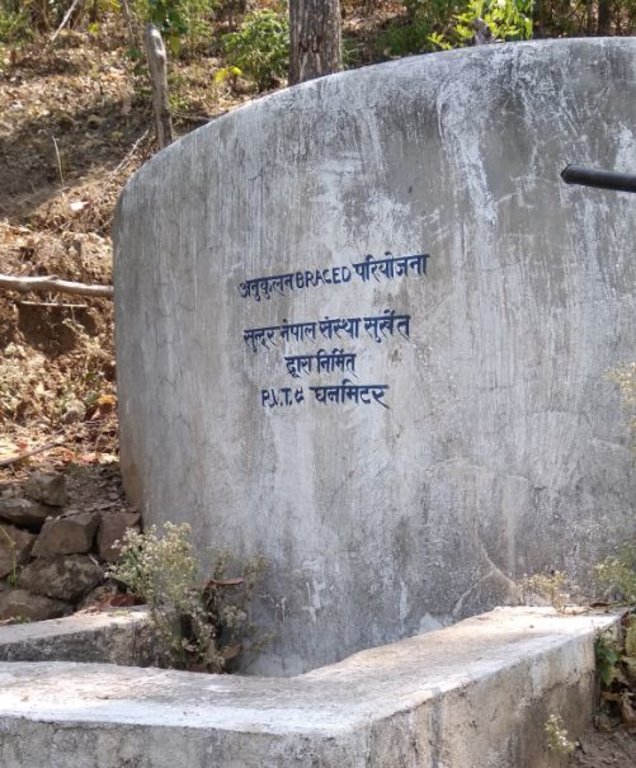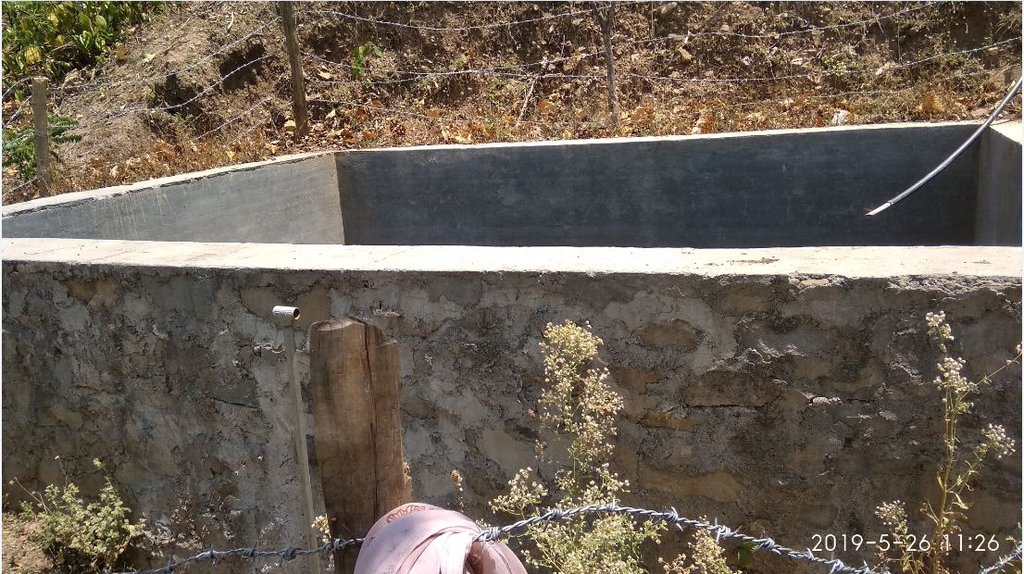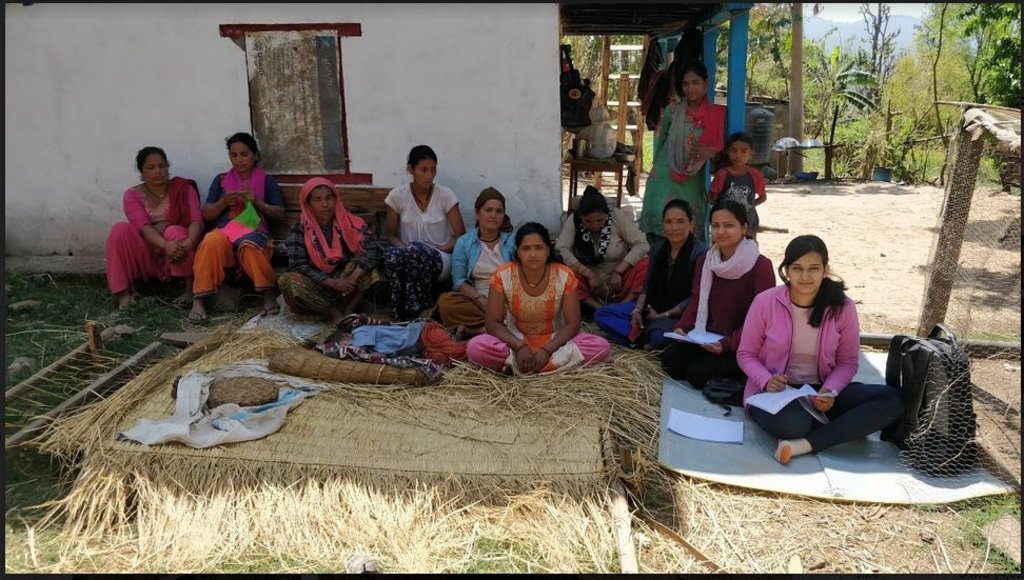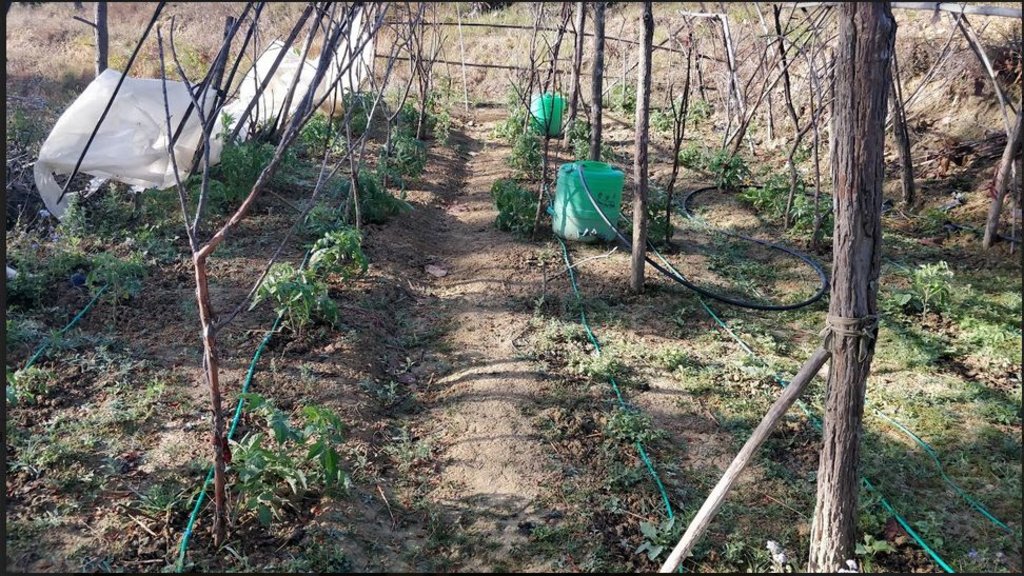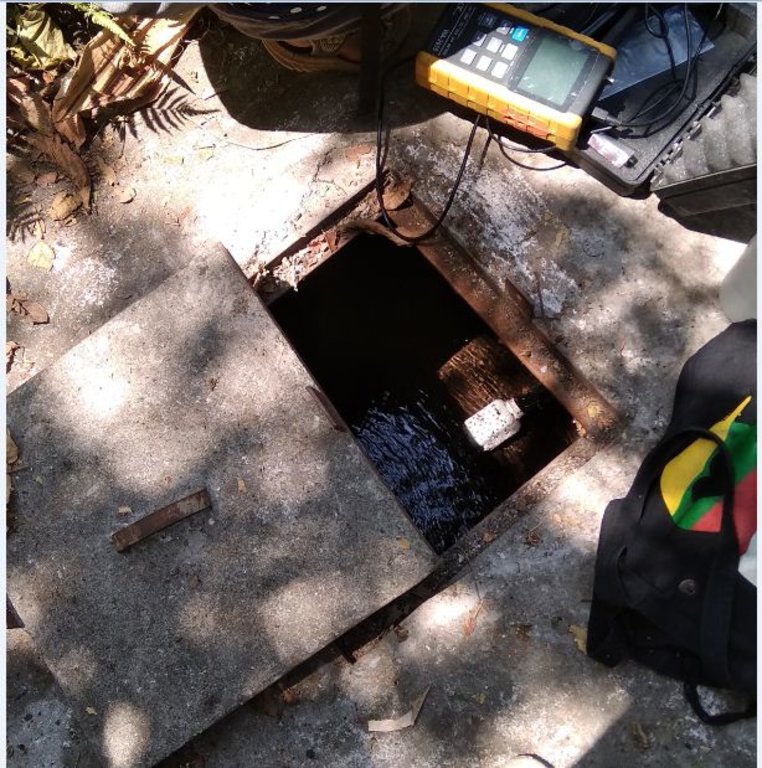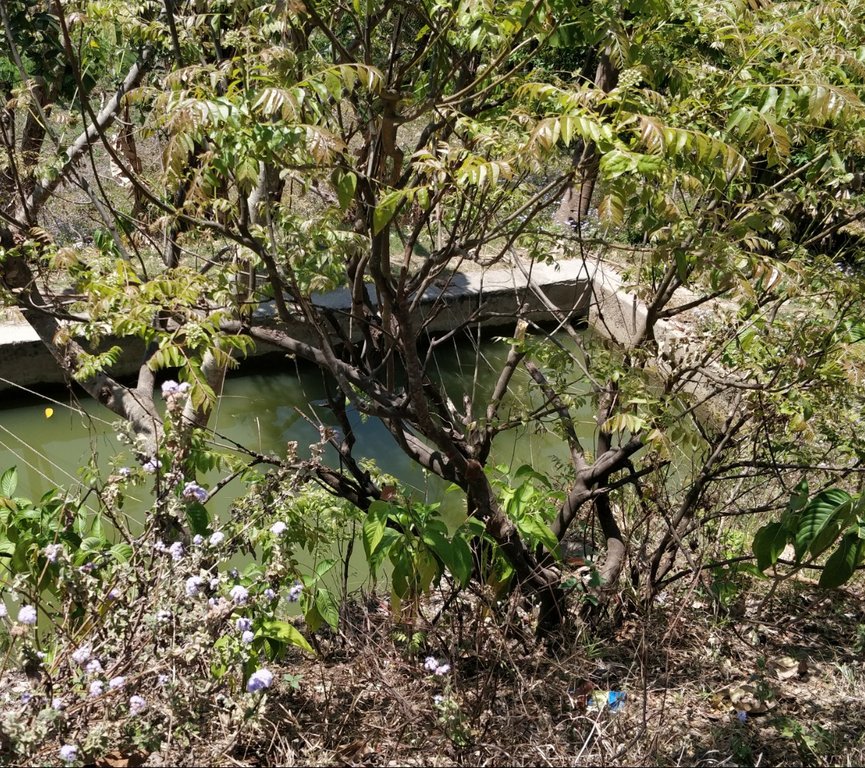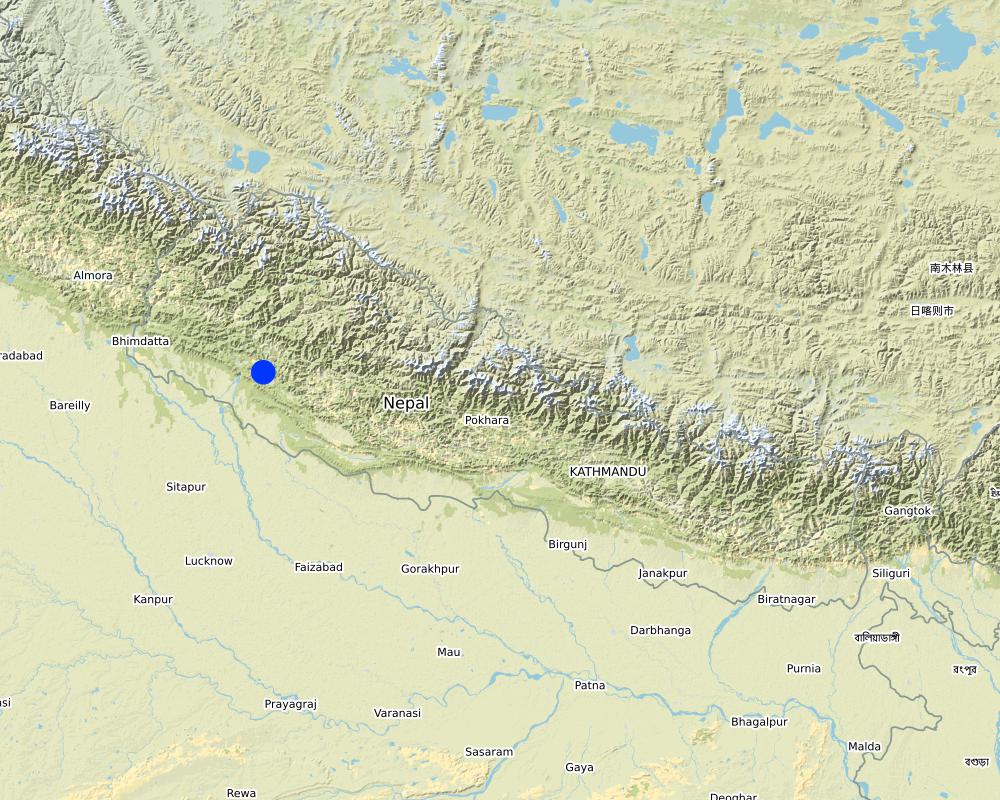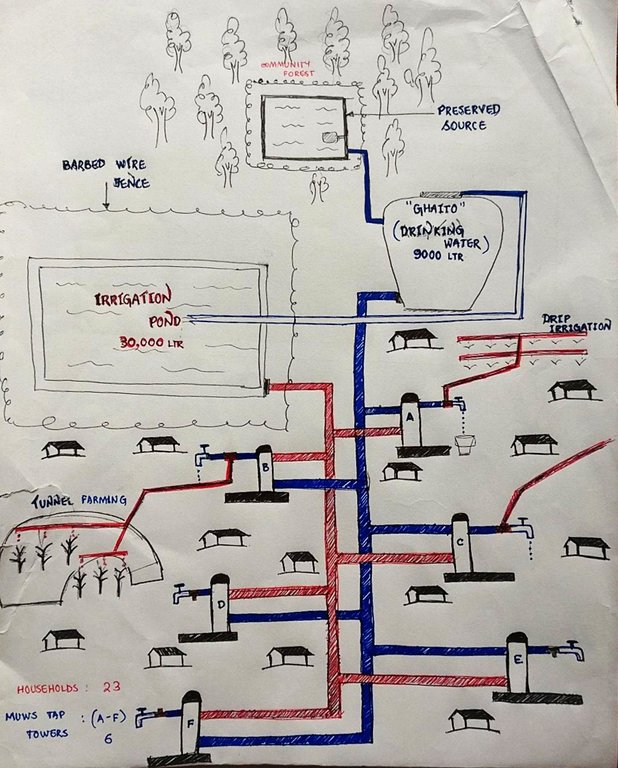Multiple Use Water System ( Gravity-Fed ) [เนปาล]
- ผู้สร้างสรรค์:
- การอัพเดท:
- ผู้รวบรวม: Jhuna Kattel
- ผู้เรียบเรียง: –
- ผู้ตรวจสอบ: Renate Fleiner
Saajh Pani Ghaito
technologies_5200 - เนปาล
ดูส่วนย่อย
ขยายทั้งหมด ย่อทั้งหมด1. ข้อมูลทั่วไป
1.2 รายละเอียดที่ติดต่อได้ของผู้รวบรวมและองค์กรที่เกี่ยวข้องในการประเมินและการจัดเตรียมทำเอกสารของเทคโนโลยี
วิทยากรหลัก
Water User:
B.K. Amrita
เนปาล
ชื่อของโครงการซึ่งอำนวยความสะดวกในการทำเอกสารหรือการประเมินเทคโนโลยี (ถ้าเกี่ยวข้อง)
Prospects and challenges of water use systems as climate adaptive option for sustainable water management in Himalayan Regionชื่อขององค์กรซึ่งอำนวยความสะดวกในการทำเอกสารหรือการประเมินเทคโนโลยี (ถ้าเกี่ยวข้อง)
Kathmandu University (KU) - เนปาล1.3 เงื่อนไขการใช้ข้อมูลที่ได้บันทึกผ่านทาง WOCAT
ผู้รวบรวมและวิทยากรหลักยอมรับเงื่อนไขเกี่ยวกับการใช้ข้อมูลที่ถูกบันทึกผ่านทาง WOCAT:
ใช่
1.4 การเปิดเผยเรื่องความยั่งยืนของเทคโนโลยีที่ได้อธิบายไว้
เทคโนโลยีที่ได้อธิบายไว้นี้เป็นปัญหาของความเสื่อมโทรมโทรมของที่ดินหรือไม่ จึงไม่ได้รับการยอมรับว่าเป็นเทคโนโลยีเพื่อการจัดการที่ดินอย่างยั่งยืน:
ไม่ใช่
แสดงความคิดเห็น:
The technology used serves as a source of providing water for drinking and other multiple uses; such that it acts as a means to conserve and manage water resources rather than degrade them.
2. การอธิบายลักษณะของเทคโนโลยี SLM
2.1 การอธิบายแบบสั้น ๆ ของเทคโนโลยี
คำจำกัดความของเทคโนโลยี:
Natural water source in hill top is collected in a small reservoir-chamber ( to preserve natural source), then passes onto a Reservoir Tank (RVT) for drinking water (ferro-cement tank/ Ghaito) with a capacity of 9000L that falls within individual’s plot of land. When the ferro-cement tank gets filled, water overflows, is collected in another reservoir pond (30,000L) for irrigation and other multiple uses. From the Ghaito and reservoir pond, two pipelines are fed and water is supplied into individual Multiple Use Water System (MUWS) tap towers.
2.2 การอธิบายแบบละเอียดของเทคโนโลยี
คำอธิบาย:
The technology is applied in a natural environment. The place of study falls under the dry belt of Nepal, receiving less than average annual rainfall (in context of Nepal). The source of water is natural that is located within a community forest area (samudayik ban), which is owned by the government and consists of trees like Sal, Supari (areca nuts), etc. From there, water collects onto a Ghaito / ferro-cement tank, which falls on the land owned by Mr. Krishna Bahadur B.K., who voluntarily agreed to donate the land for its construction. The total area covered for the tank is 1 ropani (1 hectare = 19.65 ropanis). From the reservoir, water is collected in a ferrocement tank / Ghaito / Thulo tanki (for drinking water) and a reservoir pond (for irrigation). Poly Vinyl Chloride (PVC) pipes are fed onto the tanks to distribute the water for multiple purposes in 6 Multiple Use Water System (MUWS) tap-towers; which consist of two faucets each - one for drinking and the other for irrigation and other purposes.
The major purposes of this technology are to supply clean water for drinking and other purposes to the community that is comprised of 23 households, through a cheap, effective and simple system. For establishing the system, labour and construction materials were needed for building Ghaito and pipeline systems. For the maintenance, manual labour is necessary. The natural source of water is locally maintained. The quality of the water that is supplied to the 23 households is good and the quantity seems sufficient for the number of households. Operation and maintenance works are done by the locals who collect NPR. 50 from each household. The system is guarded by a watchman (Chaukidar) who is given a monthly stipend of NPR. 800 from the committee. The system was financed through a public-private-partnership (PPP) program; out of which some amount was funded by a Non-Governmental Organization (NGO) - Sundar Nepal, primary survey of the natural source of water was done by another NGO- Anukulan Project with the help from UK-AID (NPR. 1,46,000) , and the remaining funds were contributed by the locals’ group (NPR. 1,39,183), by collecting NPR. 3000 initially then NPR. 1200 from each household. The then Village Development Committee (VDC) donated NPR. 1,00,000 and labour costs borne by the locals amounted to NPR. 85,600. Total amount invested for the project amounted to NPR. 4,70,783. Benefits of the technology are the sustainable use of water resources through a MUWS system, cheap and effective way to conserve water resources and the ensured availability of clean water even through dry seasons. The villagers like the facts that the water is clean, more water is available for irrigation for vegetable farming, and that their day-to-day life is simplified. They dislike the limited availability of water during dry season and that out of 6 systems only 3 are in operation and the other ones are in a non-working condition.
A separate committee is set up for the smooth operation of the system, which consists of 20 members- 10 males and 10 females. The head of the committee is Mrs. Amrita B.K.. The committee conducts a monthly meeting on 10th of each Nepalese month to discuss the problems and need of maintenance. During the initial setup, the connection of pipelines from the tap systems to the reservoir tanks was, however, done with the contribution of the locals. Every month, each family contributes NPR 50, which goes to a fund that is set up for the times of need. The labor contribution by the people of the VDC was dependent upon the number and availability of family members in the household. Similarly, the use of MUWS system and water from it is also dependent upon the availability of family members. Little to no maintenance was done to the system till now from 2073 B.S. ( 3 years) . Equal number of male and female members are in the committee dedicated to the MUWS system.
2.3 รูปภาพของเทคโนโลยี
คำอธิบายภาพ:
Ghaito/ Ferrocemetn tank for drinking water, Irrigation pond, the committee, MUWS tower and tunnels with drip irrigation are shown in the images
2.5 ประเทศภูมิภาค หรือสถานที่ตั้งที่เทคโนโลยีได้นำไปใช้และได้รับการครอบคลุมโดยการประเมินนี้
ประเทศ:
เนปาล
ภูมิภาค/รัฐ/จังหวัด:
Province-6, Mid-Western Development Region
ข้อมูลจำเพาะเพิ่มเติมของสถานที่ตั้ง :
Kunathari VDC-5, Saajh Pani, Barahataal, Badichaur
ระบุการกระจายตัวของเทคโนโลยี:
- ใช้ ณ จุดที่เฉพาะเจาะจงหรือเน้นไปยังบริเวณพื้นที่ขนาดเล็ก
Is/are the technology site(s) located in a permanently protected area?
ไม่ใช่
Map
×2.6 วันที่การดำเนินการ
ระบุปีที่ใช้:
2015
2.7 คำแนะนำของเทคโนโลยี
ให้ระบุว่าเทคโนโลยีถูกแนะนำเข้ามาอย่างไร:
- ทางโครงการหรือจากภายนอก
ความคิดเห็น (ประเภทของโครงการ เป็นต้น) :
Sundar Nepal- a non governmental organization helped initiate the project
UKAID ( Anukulan Project) - an inernational non governmental project ( INGO ) helped with the technical aspects of the project
3. การจัดประเภทของเทคโนโลยี SLM
3.1 วัตถุประสงค์หลักของเทคโนโลยี
- ปรับปรุงการผลิตให้ดีขึ้น
- ลด ป้องกัน ฟื้นฟู การเสื่อมโทรมของที่ดิน
- ปรับตัวเข้ากับการเปลี่ยนแปลงภูมิอากาศของโลก สภาพภูมิอากาศที่รุนแรงและผลกระทบ
- สร้างผลกระทบทางด้านเศรษฐกิจที่เป็นประโยชน์
- improve water security and increase efficient use at a household level
3.2 ประเภทของการใช้ที่ดินในปัจจุบันที่ได้นำเทคโนโลยีไปใช้

พื้นที่ปลูกพืช
- การปลูกพืชล้มลุกอายุปีเดียว
- การปลูกพืชยืนต้นที่ไม่มีเนื้อไม้
Annual cropping - Specify crops:
- cereals - barley
- cereals - maize
- cereals - rice (wetland)
- cereals - wheat (winter)
Perennial (non-woody) cropping - Specify crops:
- areca
- banana/plantain/abaca
- sugar cane
จำนวนของฤดูเพาะปลูกต่อปี:
- 3
ระบุ:
The water used for irrigation is used in fields for 2-3 cycles of crop growing (annual) like rice, maize and barley and into kitchen-farming/tunnel farming (perennial) where vegetables grown are cucumber, tomatoes, chilli, bitterguard, peas, etc.
Is intercropping practiced?
ไม่ใช่
Is crop rotation practiced?
ใช่
ถ้าใช่ ระบุ:
Rice, Maize and Wheat are cycled according to the seasons.

อื่น ๆ
ระบุ:
Drinking Water
ข้อสังเกต:
Drinking water used directly from the tap systems. Some boil it but most of them use it straight from the tap systems and consume without filtration.
แสดงความคิดเห็น:
Irrigation and Multiple Uses: The locals use the technology in order to irrigate their cropland so that the plant productivity is increased. As well, the introduction of this technology has opened up doors to new possibilities like construction of tunnels ( green houses) so that the locals can grow seasonal and off-seasonal vegetables in their backyards. Animal husbandry has also been an increasing practice. Human uses like washing, cooking, cleaning, bathing, etc are amply sufficient due to adequacy of water from this technology.
3.3 Has land use changed due to the implementation of the Technology?
Has land use changed due to the implementation of the Technology?
- Yes (Please fill out the questions below with regard to the land use before implementation of the Technology)

พื้นที่ปลูกพืช
- การปลูกพืชล้มลุกอายุปีเดียว
- การปลูกพืชยืนต้นที่ไม่มีเนื้อไม้
Annual cropping - Specify crops:
- cereals - barley
- cereals - maize
- cereals - rice (wetland)
- cereals - wheat (winter)
Perennial (non-woody) cropping - Specify crops:
- banana/plantain/abaca
Is intercropping practiced?
ไม่ใช่
Is crop rotation practiced?
ไม่ใช่
แสดงความคิดเห็น:
Before the introduction of the technology, the land productivity was minimal. Water for human uses like bathing, cleaning, washing, cooking, etc. were scarce; especially during the dry seasons. No green houses were constructed. They used to rear very few cattle.
After the technology, vegetables from green houses in their backyards are sold to markets, which has acted as an alternative source of earning perennially.
3.4 การใช้น้ำ
อื่นๆ (เช่น หลังจากน้ำท่วม):
- Natural source (Mool) of water in foliage atop a hill that falls under Mr. Krishna Bdr. B.K.'s land
แสดงความคิดเห็น:
The supply of water comes from a natural source ( 'mool' in local language) , where a small enclosure is constructed so that the source is preserved and water is amply supplied to the ferro-cement tank for drinking purposes ( 'Ghaito' in local language) and the reservoir pond for irrigation purposes.
3.5 กลุ่ม SLM ที่ตรงกับเทคโนโลยีนี้
- การเก็บเกี่ยวน้ำ
- การจัดการด้านชลประทาน (รวมถึงการลำเลียงส่งน้ำ การระบายน้ำ)
- Gravity Fed Multiple Use Water System (MUWS) , New Scheme
3.6 มาตรการ SLM ที่ประกอบกันเป็นเทคโนโลยี

มาตรการอนุรักษ์ด้วยโครงสร้าง
- S5: เขื่อน ชั้นดินที่แน่นแข็งบ่อน้ำ
- S6: กำแพง สิ่งกีดขวาง รั้วไม้ รั้วต่างๆ
- S7: การกักเก็บน้ำ/การส่งลำเลียง/อุปกรณ์การชลประทาน
- S11: อื่น ๆ
แสดงความคิดเห็น:
The technology is comprised of structures like Tanks (ferro-cement), Ponds (Concrete), Pipes, etc which use a myriad of resources like cement, iron rods, PVC pipes, fences for enclosure, etc.
3.7 รูปแบบหลักของการเสื่อมโทรมของที่ดินที่ได้รับการแก้ไขโดยเทคโนโลยี

การเสื่อมโทรมของน้ำ
- Hs (Change in quantity of surface water): การเปลี่ยนแปลงปริมาณของน้ำที่ผิวดิน
- Hp (Decline of surface water quality): การลดลงของคุณภาพน้ำที่ผิวดิน
แสดงความคิดเห็น:
Before setting up the technology, much of the water during dry seasons would evaporate from the natural source ( mool) and there would be scarcity of water during dry seasons. This has been addressed by the technology, where securing the natural source of water prevented evaporation and storing water in enclosed tanks helped supply water during dry seasons.
Similarly, due to no preservation of the source and no storage tanks, the water would be soiled by sediments, wastes and insects' larvae. After setting technology up, the quality of water has vastly improved as well
3.8 การป้องกัน การลดลง หรือการฟื้นฟูความเสื่อมโทรมของที่ดิน
ระบุเป้าหมายของเทคโนโลยีกับความเสื่อมโทรมของที่ดิน:
- ป้องกันความเสื่อมโทรมของที่ดิน
แสดงความคิดเห็น:
The technology prevents water source degradation, improves perennial water availability, reduces effects like drought, floods, etc. Thus, land degradation by means of lands turning barren, dry,etc is tackled by this technology.
4. ข้อมูลจำเพาะด้านเทคนิค กิจกรรมการนำไปปฏิบัติใช้ ปัจจัยนำเข้า และค่าใช้จ่าย
4.1 แบบแปลนทางเทคนิคของเทคโนโลยี
ข้อมูลจำเพาะด้านเทคนิค (แบบแปลนทางเทคนิคของเทคโนโลยี):
Source: Natural (mool) atop a small hill, secured by wire fences and preserved with concrete and metal lid ( to prevent evaporation).
Water from source collected in Ferro-Cement Tank / Reservoir Tank (RVT) / "Ghaito" in local language, with capacity 9000Ltrs.
Water overflows from RVT into an Irrigation Pond (Open Top, Concrete) with capacity 30,000Ltrs.
PVC Pipes leave the RVT and Pond into 6 MUWS Tap Towers ("Thaado" in local language) to serve 23 households.
One faucet supplies drinking water from RVT and next faucet supplies water for irrigation and other multiple purposes (drip irrigation, tunnel farming, etc.).
ผู้เขียน:
Jhuna Kattel
วันที่:
26/05/2019
4.2 ข้อมูลทั่วไปเกี่ยวกับการคำนวณปัจจัยนำเข้าและค่าใช้จ่าย
ให้ระบุว่าค่าใช้จ่ายและปัจจัยนำเข้าได้รับการคำนวณอย่างไร:
- ต่อพื้นที่ที่ใช้เทคโนโลยี
ระบุขนาดและหน่วยพื้นที่:
5-6 dhurs
If using a local area unit, indicate conversion factor to one hectare (e.g. 1 ha = 2.47 acres): 1 ha =:
1 hectare = 590.70 dhurs
อื่นๆ หรือสกุลเงินประจำชาติ (ระบุ):
NPR
If relevant, indicate exchange rate from USD to local currency (e.g. 1 USD = 79.9 Brazilian Real): 1 USD =:
110.0
ระบุค่าเฉลี่ยของค่าจ้างในการจ้างแรงงานต่อวัน:
N/A ( voluntary labour from each household)
4.3 กิจกรรมเพื่อการจัดตั้ง
| กิจกรรม | Timing (season) | |
|---|---|---|
| 1. | Enclosement for the groundwater source | Summer Season ( Before Rains) |
| 2. | Construction of Ferro-cement tank for Drinking Water | Summer Season ( Before Rains) |
| 3. | Construction of Concrete tank for Irrigation | Summer Season and During Rainy Season |
| 4. | Securing the perimeter for the tanks | Rainy Season |
| 5. | Laying down the PVC pipework | Rainy Season |
| 6. | Construction of 6 individual MUWS tap towers ( Thaado in Nepalese language) | After Rains |
| 7. | Final touch-ups, Setting up faucets, Preliminary checking | After Rains |
แสดงความคิดเห็น:
A total of roughly 5 months (140 days ) was required for the construction of the technology to be completed.
Construction was initiated before the rains, and could only be completed after the rainy season.
4.4 ค่าใช้จ่ายของปัจจัยนำเข้าที่จำเป็นสำหรับการจัดตั้ง
| ปัจจัยนำเข้า | หน่วย | ปริมาณ | ค่าใช้จ่ายต่อหน่วย | ค่าใช้จ่ายทั้งหมดต่อปัจจัยนำเข้า | %ของค่าใช้จ่ายที่ก่อให้เกิดขึ้นโดยผู้ใช้ที่ดิน | |
|---|---|---|---|---|---|---|
| แรงงาน | Labour Costs by Locals | N/A | 1.0 | 85600.0 | 85600.0 | 100.0 |
| แรงงาน | Primary Survey and Securing of Source | 1 | 1.0 | 146000.0 | 146000.0 | |
| อุปกรณ์ | Construction of Tank, Pond and MUWS Tap Towers | 1 | 1.0 | 100000.0 | 100000.0 | |
| อุปกรณ์ | Laying down pipework, Other Construction | 1 | 1.0 | 139183.0 | 139183.0 | 100.0 |
| ค่าใช้จ่ายทั้งหมดของการจัดตั้งเทคโนโลยี | 470783.0 | |||||
| Total costs for establishment of the Technology in USD | 4279.85 | |||||
If you are unable to break down the costs in the table above, give an estimation of the total costs of establishing the Technology:
470783.0
ถ้าผู้ใช้ที่ดินรับภาระน้อยกว่า 100% ของค่าใช้จ่าย ให้ระบุว่าใครเป็นผู้รับผิดชอบส่วนที่เหลือ:
Village Developmment Committee, Anukulan Project (under UK-AID) NGO, Sundar Nepal (NGO)
แสดงความคิดเห็น:
1.Village Developmment Committee:NPR. 1,00,000
2.Anukulan Project (under UK-AID) NGO: ~ NPR. 1,46,000
3.Water – Users : NPR. 1,39,000 ( collected from households)
4. NPR. 85,600 ( labour costs contributed by the locals)
4.5 การบำรุงรักษาสภาพหรือกิจกรรมที่เกิดขึ้นเป็นประจำ
| กิจกรรม | ช่วงระยะเวลา/ความถี่ | |
|---|---|---|
| 1. | Pipeline Maintenance Work | During Dry Seasons (Winter) annually |
แสดงความคิดเห็น:
The maintenance works have been carried out on the pipework for 2-3 times during the winter seasons, wherein the PVC pipes had to be replaced due to the collection of lime inside.
4.6 ค่าใช้จ่ายของปัจจัยนำเข้าและกิจกรรมที่เกิดขึ้นเป็นประจำที่ต้องการการบำรุงรักษา (ต่อปี)
| ปัจจัยนำเข้า | หน่วย | ปริมาณ | ค่าใช้จ่ายต่อหน่วย | ค่าใช้จ่ายทั้งหมดต่อปัจจัยนำเข้า | %ของค่าใช้จ่ายที่ก่อให้เกิดขึ้นโดยผู้ใช้ที่ดิน | |
|---|---|---|---|---|---|---|
| แรงงาน | Voluntary Labour borne by the Locals | 1 | 1.0 | 100.0 | ||
| อุปกรณ์ | PVC Pipes | 1 metres | 400.0 | 30.0 | 12000.0 | 100.0 |
| ค่าใช้จ่ายทั้งหมดของการบำรุงรักษาสภาพเทคโนโลยี | 12000.0 | |||||
| Total costs for maintenance of the Technology in USD | 109.09 | |||||
แสดงความคิดเห็น:
The maintenance works were borne by the locals through voluntary contribution, which couldn't be calculated to an exact number. However, estimating the costs of PVC pipes per meter and the number of times they were replaced, the total costs for maintenance came to around 109.09 USD (~ NPR 12,000).
The locals voluntarily agreed for labour required.
4.7 ปัจจัยสำคัญที่สุดที่มีผลกระทบต่อค่าใช้จ่าย
ปัจจัยสำคัญที่สุดที่มีผลกระทบต่อค่าใช้จ่ายต่างๆ:
PVC Pipes costs.
5. สิ่งแวดล้อมทางธรรมชาติและของมนุษย์
5.1 ภูมิอากาศ
ฝนประจำปี
- < 250 ม.ม.
- 251-500 ม.ม.
- 501-750 ม.ม.
- 751-1,000 ม.ม.
- 1,001-1,500 ม.ม.
- 1,501-2,000 ม.ม.
- 2,001-3,000 ม.ม.
- 3,001-4,000 ม.ม.
- > 4,000 ม.ม.
ข้อมูลจำเพาะ/ความคิดเห็นเรื่องปริมาณน้ำฝน:
Monsoon/ Rainy Season 2-3 months ( June-August)
ระบุชื่อของสถานีตรวดวัดอากาศที่ใช้อ้างอิงคือ:
Meteorological Forecasting Division, Nepal ( www.mfd.gov.np)
เขตภูมิอากาศเกษตร
- กึ่งชุ่มชื้น
The annual total rainfall has been stated as 1609.0mm but, average annual rainfall of the study area couldn't be found in any literature
5.2 สภาพภูมิประเทศ
ค่าเฉลี่ยความลาดชัน:
- ราบเรียบ (0-2%)
- ลาดที่ไม่ชัน (3-5%)
- ปานกลาง (6-10%)
- เป็นลูกคลื่น (11-15%)
- เป็นเนิน (16-30%)
- ชัน (31-60%)
- ชันมาก (>60%)
ธรณีสัณฐาน:
- ที่ราบสูง/ที่ราบ
- สันเขา
- ไหล่เขา
- ไหล่เนินเขา
- ตีนเนิน
- หุบเขา
ระดับความสูง:
- 0-100 เมตร
- 101-500 เมตร
- 501-1,000 เมตร
- 1,001-1,500 เมตร
- 1,501-2,000 เมตร
- 2,001-2,500 เมตร
- 2,501-3,000 เมตร
- 3,001-4,000 เมตร
- > 4,000 เมตร
5.3 ดิน
ค่าเฉลี่ยความลึกของดิน:
- ตื้นมาก (0-20 ซ.ม.)
- ตื้น (21-50 ซ.ม.)
- ลึกปานกลาง (51-80 ซ.ม.)
- ลึก (81-120 ซ.ม.)
- ลึกมาก (>120 ซ.ม.)
เนื้อดิน (ดินชั้นบน):
- ปานกลาง (ดินร่วน ทรายแป้ง)
- ละเอียด/หนัก (ดินเหนียว)
เนื้อดินล่าง (> 20 ซ.ม.ต่ำจากผิวดิน):
- ปานกลาง (ดินร่วน ทรายแป้ง)
อินทรียวัตถุในดิน:
- ปานกลาง (1-3%)
5.4 ความเป็นประโยชน์และคุณภาพของน้ำ
ระดับน้ำใต้ดิน:
<5 เมตร
น้ำไหลบ่าที่ผิวดิน:
ดี
คุณภาพน้ำ (ที่ยังไม่ได้บำบัด):
เป็นน้ำเพื่อการดื่มที่ดี
Water quality refers to:
both ground and surface water
ความเค็มของน้ำเป็นปัญหาหรือไม่:
ไม่ใช่
กำลังเกิดน้ำท่วมในพื้นที่หรือไม่:
ไม่ใช่
ความคิดเห็นและข้อมูลจำเพาะเพิ่มเติมเรื่องคุณภาพและปริมาณน้ำ:
Before the introduction of MUWS technology, the water used to be a problem during the dry seasons. However, after the technology was applied, the natural ground water source is conserved, people have been monitoring the water levels cautiously and nowadays, the water sustains the locals during the dry seasons as well.
Salinity is not a problem, but the presence of lime in the water is a problem.
5.5 ความหลากหลายทางชีวภาพ
ความหลากหลายทางชนิดพันธุ์:
- ปานกลาง
ความหลากหลายของแหล่งที่อยู่:
- ปานกลาง
ความคิดเห็นและข้อมูลจำเพาะเพิ่มเติมของความหลากหลายทางชีวภาพ:
Birds are abundant, new fowls are sighted regularly.Lampuchhre ( Long-tailed widowbird),Ravens,Hawks,Peacocks and peafowls,Peasants,Guinea fowls and other fowls; rarely seen before are common after setting up the technology.
Animal sighting is rare. Forests, although consisting of a few varieties of trees, like Saal ( shorea robusta), Sadhana ( Moringa) , Belauti ( Guava), Sallo ( pine tree), Aap ( Mango). very few species are abundant in a given stretch of land.
5.6 ลักษณะของผู้ใช้ที่ดินที่นำเทคโนโลยีไปปฏิบัติใช้
อยู่กับที่หรือเร่ร่อน:
- กึ่งเร่ร่อน
แนวทางการตลาดของระบบการผลิต:
- mixed (subsistence/ commercial)
รายได้ที่มาจากนอกฟาร์ม:
- 10-50% ของรายได้ทั้งหมด
ระดับของความมั่งคั่งโดยเปรียบเทียบ:
- จน
เป็นรายบุคคล/ครัวเรือน:
- เป็นรายบุคคล/ครัวเรือน
ระดับของการใช้เครื่องจักรกล:
- งานที่ใช้แรงกาย
เพศ:
- หญิง
- ชาย
อายุของผู้ใช้ที่ดิน:
- เด็ก
- ผู้เยาว์
- วัยกลางคน
- ผู้สูงอายุ
ระบุลักษณะอื่นๆที่เกี่ยวข้องของผู้ใช้ที่ดิน:
Members of the community: 1:1 ratio of males to females
Age : mostly middle-aged, a few children and few elderly
Caste/ Ethnicity: Thakuri, Dalit and Janajati
Literacy: few persons completed High – School level (+2), rest are literate ( Class 5)
Total Land Holding: 16 ropanis (1 Hectare = 19.65 ropanis) of land. Human Settlement since last 40+ years in search of better opportunities and access to better services of water, roads, etc.
Total households: 23
Jobs: Males : bread- earners, construction workers, labour, farming
Females: Housewives, Farming. Most of the males in the village have been to foreign country ( India specially) for manual labor and mostly females are present in the village.
Ethnicity: Few families are of Upper- Caste: Thakuris ( as per Nepalese traditions) and most are Dalits and Janajatis; who were considered lower caste previously. But, the caste system has already been abolished from Nepal.
5.7 Average area of land used by land users applying the Technology
- < 0.5 เฮกตาร์
- 0.5-1 เฮกตาร์
- 1-2 เฮกตาร์
- 2-5 เฮกตาร์
- 5-15 เฮกตาร์
- 15-50 เฮกตาร์
- 50-100 เฮกตาร์
- 100-500 เฮกตาร์
- 500-1,000 เฮกตาร์
- 1,000-10,000 เฮกตาร์
- >10,000 เฮกตาร์
พิจารณาว่าเป็นขนาดเล็ก กลาง หรือขนาดใหญ่ (ซึ่งอ้างอิงถึงบริบทระดับท้องถิ่น):
- ขนาดเล็ก
แสดงความคิดเห็น:
23 households spread over around 16 ropanis of land
1 hectare = > 19 ropanis
5.8 กรรมสิทธิ์ในที่ดิน สิทธิในการใช้ที่ดินและสิทธิในการใช้น้ำ
กรรมสิทธิ์ในที่ดิน:
- รายบุคคล ไม่ได้รับสิทธิครอบครอง
- The source, tanks fall under private land area- owned by the Mr. Krishna Bdr. B.K., who voluntarily donated the land
สิทธิในการใช้ที่ดิน:
- เกี่ยวกับชุมชน (ถูกจัดระเบียบ)
สิทธิในการใช้น้ำ:
- เกี่ยวกับชุมชน (ถูกจัดระเบียบ)
Are land use rights based on a traditional legal system?
ไม่ใช่
ระบุ:
Previously, the society had a caste system in which the higher and lower caste discrimination was done and the water tainted by the lower caste ( Dalits, Janajatis) were deemed “unfit” by the upper caste ( Thakuris, Brahmins, Chhetris). However, after the abolishment of the caste system, everyone enjoys equal rights to the access to water.
5.9 การเข้าถึงบริการและโครงสร้างพื้นฐาน
สุขภาพ:
- จน
- ปานกลาง
- ดี
การศึกษา:
- จน
- ปานกลาง
- ดี
ความช่วยเหลือทางด้านเทคนิค:
- จน
- ปานกลาง
- ดี
การจ้างงาน (เช่น ภายนอกฟาร์ม):
- จน
- ปานกลาง
- ดี
ตลาด:
- จน
- ปานกลาง
- ดี
พลังงาน:
- จน
- ปานกลาง
- ดี
ถนนและการขนส่ง:
- จน
- ปานกลาง
- ดี
น้ำดื่มและการสุขาภิบาล:
- จน
- ปานกลาง
- ดี
บริการด้านการเงิน:
- จน
- ปานกลาง
- ดี
แสดงความคิดเห็น:
The access to health, education and markets along with other facilities is only accessible after a 15 minute journey to the ‘bazaar’ or market area from the village.
After implementation of the project, people are able to grow vegetables in green houses, annually, and that has added to their source of income.
6. ผลกระทบและสรุปคำบอกกล่าว
6.1 ผลกระทบในพื้นที่ดำเนินการ (On-site) จากการใช้เทคโนโลยี
ผลกระทบทางด้านเศรษฐกิจและสังคม
การผลิต
การผลิตพืชผล
คุณภาพพืชผล
การผลิตพืชที่ใช้เลี้ยงปศุสัตว์
คุณภาพพืชที่ใช้เลี้ยงปศุสัตว์
การผลิตสัตว์
การผลิตไม้
คุณภาพป่า /พื้นที่ทำไม้
การผลิตของจากป่าทุกชนิดยกเว้นไม้
การเสี่ยงต่อความล้มเหลวในการผลิต
ความหลากหลายของผลิตภัณฑ์
พื้นที่สำหรับการผลิต
การจัดการที่ดิน
การผลิตพลังงาน
ความเป็นประโยชน์และคุณภาพของน้ำ
การมีน้ำดื่มไว้ให้ใช้
คุณภาพน้ำดื่ม
การมีน้ำไว้ให้ปศุสัตว์
คุณภาพน้ำสำหรับปศุสัตว์
การมีน้ำไว้ให้สำหรับการชลประทาน
คุณภาพน้ำสำหรับการชลประทาน
ความต้องการน้ำจากการชลประทาน
รายได้และค่าใช้จ่าย
ค่าใช่จ่ายของปัจจัยการผลิตทางการเกษตร
รายได้จากฟาร์ม
ความหลากหลายของแหล่งผลิตรายได้
ความเหลื่อมล้ำทางเศรษฐกิจ
ภาระงาน
ผลกระทบด้านสังคมวัฒนธรรมอื่น ๆ
ความมั่นคงด้านอาหาร / พึ่งตนเองได้
สถานการณ์ด้านสุขภาพ
การใช้ที่ดิน / สิทธิในการใช้น้ำ
โอกาสทางวัฒนธรรม
โอกาสทางด้านสันทนาการ
สถาบันของชุมชน
สถาบันแห่งชาติ
SLM หรือความรู้เรื่องความเสื่อมโทรมของที่ดิน
การบรรเทาความขัดแย้ง
สถานการณ์ของกลุ่มด้อยโอกาส ทางด้านสังคมและเศรษฐกิจ
ผลกระทบด้านนิเวศวิทยา
วัฐจักรน้ำหรือน้ำบ่า
ปริมาณน้ำ
คุณภาพน้ำ
การเก็บเกี่ยวหรือการกักเก็บน้ำ
น้ำไหลบ่าที่ผิวดิน
การระเหย
แสดงความคิดเห็น/ระบุ:
evaporation of water decreased after the construction of enclosures / tanks.
ดิน
ความชื้นในดิน
สิ่งปกคลุมดิน
การสูญเสียดิน
การสะสมของดิน
การเกิดแผ่นแข็งที่ผิวดิน /การเกิดชั้นดาน
การอัดแน่นของดิน
การหมุนเวียนและการเติมของธาตุอาหาร
ความเค็ม
อินทรียวัตถุในดิน/ต่ำกว่าดินชั้น C
ความเป็นกรด
ความหลากหลายทางชีวภาพของพืชและสัตว์
การปกคลุมด้วยพืช
มวลชีวภาพ/เหนือดินชั้น C
ความหลากหลายทางชีวภาพของพืช
พืชพันธุ์ต่างถิ่นที่รุกล้ำเข้ามา
ความหลากหลายทางชีวภาพของสัตว์
ชนิดพันธุ์ที่ให้ประโยชน์
ความหลากหลายของสัตว์
การจัดการศัตรูพืชและโรคพืช
ลดความเสี่ยงของภัยพิบัติ
ผลกระทบจากน้ำท่วม
ดินถล่ม/ ซากต่าง ๆ ที่ถูกพัดพามา
ผลกระทบจากภัยแล้ง
6.2 ผลกระทบนอกพื้นที่ดำเนินการ (Off-site) จากการใช้เทคโนโลยี
Specify assessment of off-site impacts (measurements):
Since this technology is adapted in a small area, without any significant construction, there is virtually no off-site impact.
However, this technology is bound to show some beneficial impacts (off-site) in the long run.
6.3 การเผชิญและความตอบสนองของเทคโนโลยีต่อการเปลี่ยนแปลงสภาพภูมิอากาศที่ค่อยเป็นค่อยไป และสภาพรุนแรงของภูมิอากาศ / ภัยพิบัติ (ที่รับรู้ได้โดยผู้ใช้ที่ดิน)
การเปลี่ยนแปลงสภาพภูมิอากาศที่ค่อยเป็นค่อยไป
การเปลี่ยนแปลงสภาพภูมิอากาศที่ค่อยเป็นค่อยไป
| ฤดู | increase or decrease | เทคโนโลยีมีวิธีการรับมืออย่างไร | |
|---|---|---|---|
| อุณหภูมิประจำปี | เพิ่มขึ้น | ปานกลาง | |
| อุณหภูมิตามฤดูกาล | ฤดูร้อน | เพิ่มขึ้น | ปานกลาง |
| ฝนประจำปี | ลดลง | ปานกลาง | |
| ฝนตามฤดู | ฤดูฝน | ลดลง | ปานกลาง |
สภาพรุนแรงของภูมิอากาศ (ภัยพิบัติ)
ภัยพิบัติจากสภาพภูมิอากาศ
| เทคโนโลยีมีวิธีการรับมืออย่างไร | |
|---|---|
| ภัยจากฝนแล้ง | ดี |
6.4 การวิเคราะห์ค่าใช้จ่ายและผลประโยชน์ที่ได้รับ
ผลประโยชน์ที่ได้รับเปรียบเทียบกับค่าใช้จ่ายในการจัดตั้งเป็นอย่างไร (จากมุมมองของผู้ใช้ที่ดิน)
ผลตอบแทนระยะสั้น:
ด้านบวก
ผลประโยชน์ที่ได้รับเปรียบเทียบกับค่าใช้จ่ายในการบำรุงรักษาหรือต้นทุนที่เกิดขึ้นซ้ำอีก เป็นอย่างไร (จากมุมมองของผู้ใช้ที่ดิน)
ผลตอบแทนระยะสั้น:
ด้านบวก
แสดงความคิดเห็น:
The system has been in operation since 3 years only. Thus, long term effects are yet to be visible.
The running and maintenance costs were an approximate calculation as per the local water users.
However, it is evident from the running and maintenance costs that the benefits outweigh the costs.
6.6 การปรับตัว
เทคโนโลยีได้รับการปรับเปลี่ยนเมื่อเร็วๆนี้ เพื่อให้ปรับตัวเข้ากับสภาพที่กำลังเปลี่ยนแปลงหรือไม่:
ไม่ใช่
6.7 จุดแข็ง / ข้อได้เปรียบ / โอกาสของเทคโนโลยี
| จุดแข็ง / ข้อได้เปรียบ / โอกาสในทัศนคติของผู้ใช้ที่ดิน |
|---|
| The system has been in operation since 3 years only. Thus, long term effects are yet to be visible |
| Availability of water even during the dry seasons. |
| Increase in the productivity of perennial vegetables in kitchen garden, construction of tunnels for farming vegetables possible. Hence, new source of income generated by selling vegetables annually. |
| จุดแข็ง / ข้อได้เปรียบ / โอกาสในทัศนคติของผู้รวบรวมหรือวิทยากรหลัก |
|---|
| Increase in the productivity of perennial vegetables in kitchen garden, construction of tunnels for farming vegetables possible |
| Need of alternative sources of water during dry seasons not present after construction of MUWS system |
| Overall productivity of land improved through effective irrigation of water |
| Self-sufficiency in the aspect of water and crops, as well as alternative sources of income increased, improving the quality of lives of the water users. |
6.8 จุดอ่อน / ข้อเสียเปรียบ / ความเสี่ยงของเทคโนโลยีและวิธีการแก้ไข
| จุดอ่อน / ข้อเสียเปรียบ / ความเสี่ยงในทัศนคติของผู้ใช้ที่ดิน | มีวิธีการแก้ไขได้อย่างไร |
|---|---|
| Water levels not rising in few tap systems out of the six constructed | Technician could oversee the problem of elevation and give a viable solution so that 6 out of 6 tap systems could be functional again |
| Pipes breaking down due to lime, and their diameter and quality could be improved | If the government and/or NGO could add to the savings of the group, good quality of Galvanized Iron (GI) pipes could be installed instead of the PVC pipes used |
| จุดอ่อน / ข้อเสียเปรียบ / ความเสี่ยงในทัศนคติของผู้รวบรวมหรือวิทยากรหลัก | มีวิธีการแก้ไขได้อย่างไร |
|---|---|
| The tank for irrigation is left open at the top, leading to evaporation of water, usually in dry seasons leading to less water in taps during dry seasons | Closing the top of the tank using a lid |
| The pipes used are not sustainable | The use of heavier PVC pipes and/or hybrid GI pipes could result in less chances of system failure due to lime in the water |
7. การอ้างอิงและการเชื่อมต่อ
7.1 วิธีการและแหล่งข้อมูล
- ไปเยี่ยมชมภาคสนาม การสำรวจพื้นที่ภาคสนาม
>10
- การสัมภาษณ์กับผู้ใช้ที่ดิน
>1
ลิงก์และโมดูล
ขยายทั้งหมด ย่อทั้งหมดลิงก์
ไม่มีลิงก์
โมดูล
ไม่มีโมดูล


